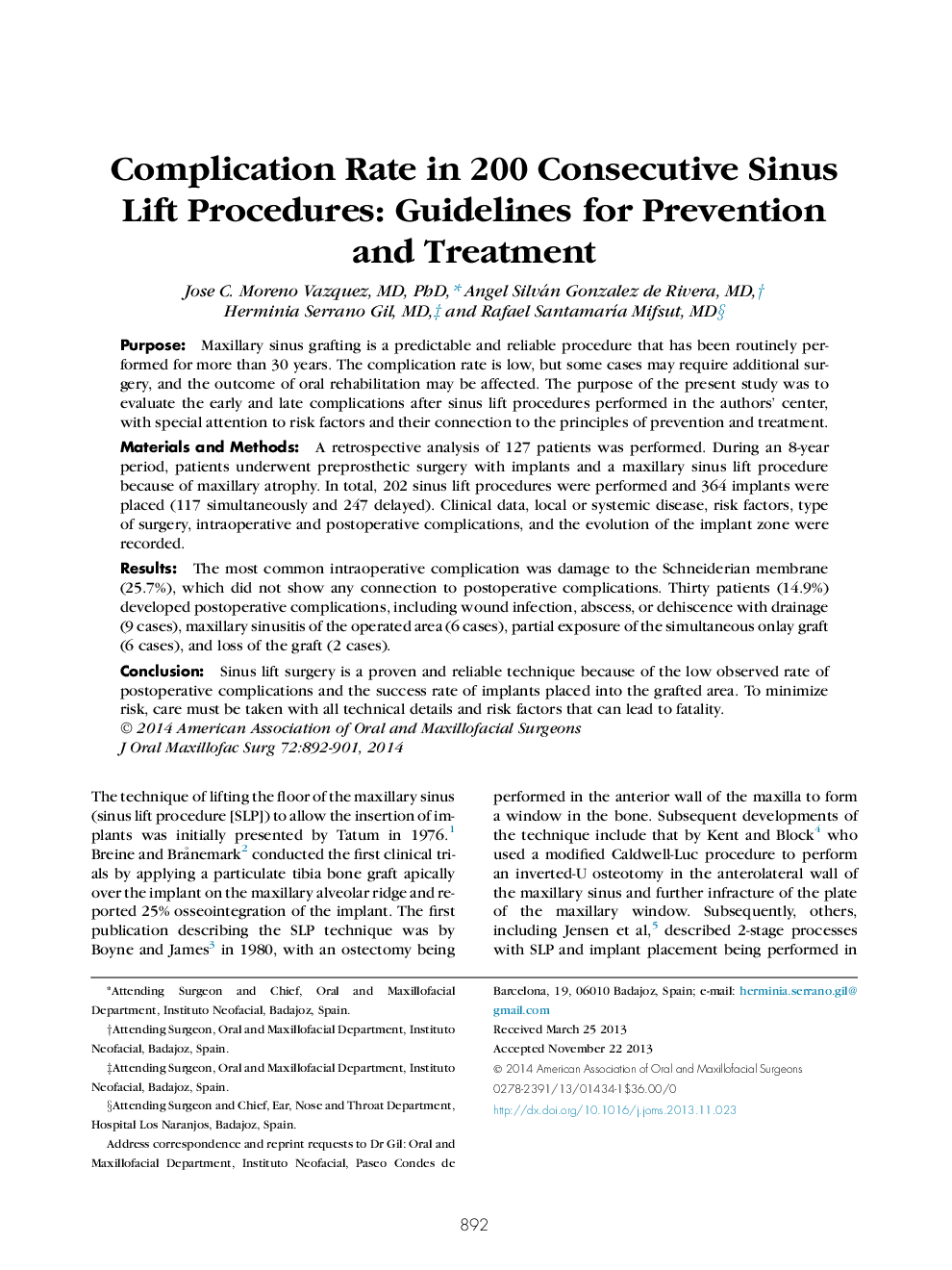| Article ID | Journal | Published Year | Pages | File Type |
|---|---|---|---|---|
| 3157876 | Journal of Oral and Maxillofacial Surgery | 2014 | 10 Pages |
PurposeMaxillary sinus grafting is a predictable and reliable procedure that has been routinely performed for more than 30 years. The complication rate is low, but some cases may require additional surgery, and the outcome of oral rehabilitation may be affected. The purpose of the present study was to evaluate the early and late complications after sinus lift procedures performed in the authors' center, with special attention to risk factors and their connection to the principles of prevention and treatment.Materials and MethodsA retrospective analysis of 127 patients was performed. During an 8-year period, patients underwent preprosthetic surgery with implants and a maxillary sinus lift procedure because of maxillary atrophy. In total, 202 sinus lift procedures were performed and 364 implants were placed (117 simultaneously and 247 delayed). Clinical data, local or systemic disease, risk factors, type of surgery, intraoperative and postoperative complications, and the evolution of the implant zone were recorded.ResultsThe most common intraoperative complication was damage to the Schneiderian membrane (25.7%), which did not show any connection to postoperative complications. Thirty patients (14.9%) developed postoperative complications, including wound infection, abscess, or dehiscence with drainage (9 cases), maxillary sinusitis of the operated area (6 cases), partial exposure of the simultaneous onlay graft (6 cases), and loss of the graft (2 cases).ConclusionSinus lift surgery is a proven and reliable technique because of the low observed rate of postoperative complications and the success rate of implants placed into the grafted area. To minimize risk, care must be taken with all technical details and risk factors that can lead to fatality.
